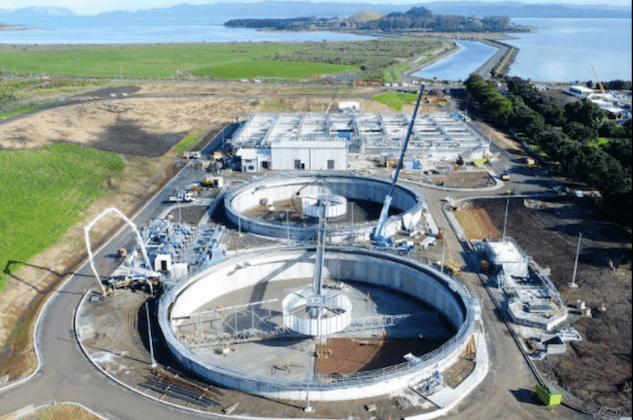Who is Watercare?
Watercare is a council-controlled organisation, wholly owned by Auckland Council and is New Zealand’s largest company in the water and wastewater industry. They supply more than 400 million litres of water to 1.7 million people across the Auckland region every day. They draw water from 27 sources, treat it and supply it to homes and businesses via a vast network of pipes. They collect, treat and dispose of around 409 million litres of wastewater daily, including trade waste from industry.
The team are responsible for $10b worth of assets, including 12 dams, 15 water treatment plants, 18 wastewater treatment plants, 9,000 km of water pipes, 8,000 km wastewater pipes, numerous pump stations and smaller wastewater systems.
As well as day-to-day water and wastewater management, they also carry out significant work to upgrade and build infrastructure to meet the needs of New Zealand’s fastest growing region.

What was the challenge that brought you to AGLX?
Like many other infrastructure providers, there are a number of challenges facing Watercare, including:
- Ageing infrastructure requiring significant investment for maintenance and renewal
- Population growth – over the next 20 years, approximately 45% of Watercare’s capital investment is in the expansion of its existing network to cater for a projected population growth of 29%
- Land-use planning and the sequencing of growth is a key uncertainty in infrastructure planning
- Climate change and the impact of extreme weather events
More importantly, Apra and the team wanted to enhance its ability to innovate and find new approaches to these challenges. There was no shortage of expert engineering thinking, however they were focused so much on optimising the business for quality and service delivery that they had reduced diversity of thinking and approaches.
At Watercare, we referred to this as the ‘big pipes’ problem. If we are optimised for building big pipes then we may fail to search for ideas that result in the need for smaller pipes, or no pipes.
Apra Boyle-Gotla – Head of Innovation
What did you do with AGLX?
This is where we did something special. We worked with Watercare to co-develop and implement a programme of work which has now been developed as the ICE Innovation® Programme.
AGLX helped the team to bring together three areas in order to think differently and create an innovative mindset.
- Harnessing data and business intelligence – detecting weak signals and opportunities to create value and move away from risk
- Natural curiosity – bringing a diverse range of views and challenging the status quo. Creating the space, time and psychological safety to enable exploration and creativity
- Ability to execute – testing multiple parallel Safe-To-Fail experiments to enable learning and identify opportunities to create value

What have been the outcomes of the engagement?
Before the engagement Watercare was struggling to understand how to address the challenges they were facing and did not have the tools and skills to enable an innovative approach to finding solutions.
The team has learned new skills and approaches. They rapidly tested new ideas to enable them to learn and move forward, while building resilience. The team became better at making decisions when the outcome was not certainty and a new culture of innovation and psychological safety has been developed.
Apra said they moved quickly from intention to action, without spending time in meetings and writing long business cases.
Apra observes that the organisation has seen the development of innovative technologies and systems.
She has also seen a change in the intent and the energy of the people who now feel empowered and motivated because they have been allowed to solve their own problems – and empowered to try solutions without fear of failure.
Innovating at Watercare now takes less energy and has shown:
- Increased efficiency, increased health and safety, increased productivity
- Better use of data and increased understanding of existing systems
- A team who is better informed
- An increase in evidence-based decision making
Our thanks go to Apra Boyle-Gotla, Head of Innovation at Watercare for co-authoring this case study with Steve.

